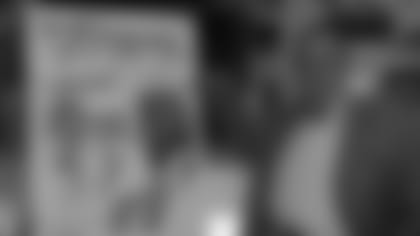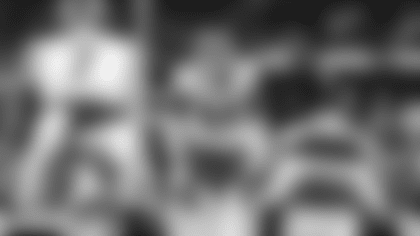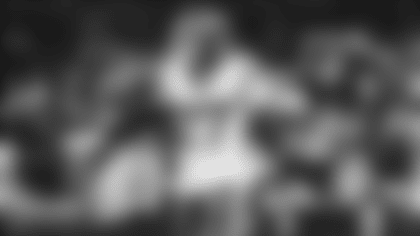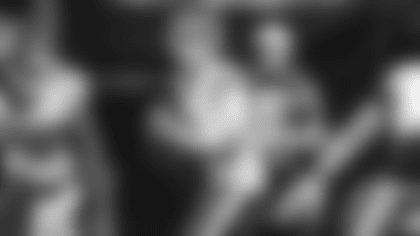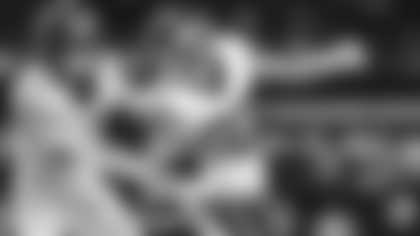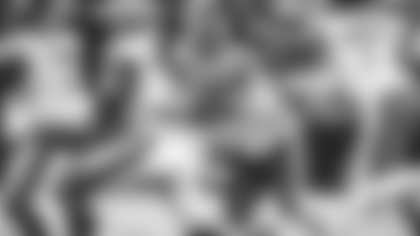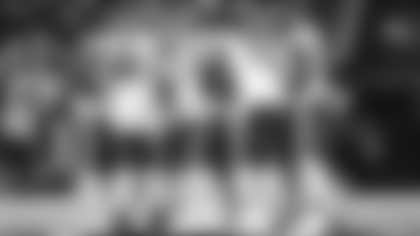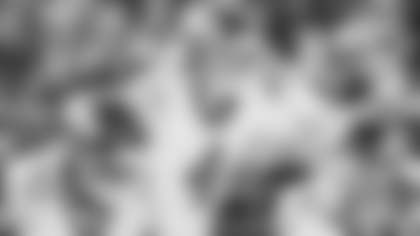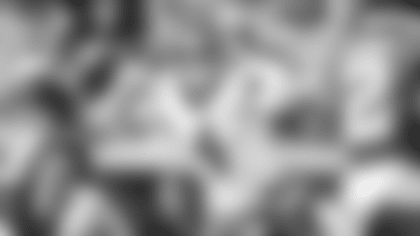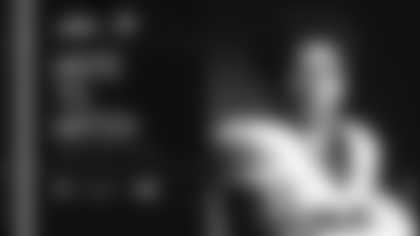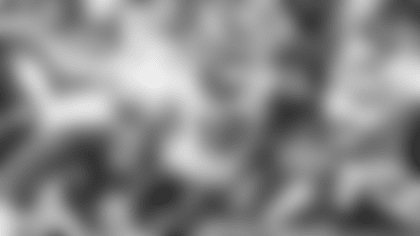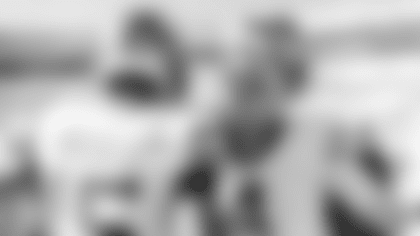The Titans rarely packed the house at the Polo Grounds in Manhattan. The American Football League's New York outfit was a novelty to the locals and was viewed as more of a curiosity.
"It was a sparse crowd," said Bill Gallo, longtime Daily News cartoonist and columnist who was there at the franchise's liftoff. "It was like going to [Brooklyn's] Dexter Park and watching some hard-working football players try to win a game. Those guys played like hell and used to get $15 a game."
While the Titans paychecks were larger than $15, they never were top billing.
"It sounds negative but this is the truth. They weren't taken seriously," he said. "But it was a football team."
Gallo, the illustrator of Sunday's Titans Throwback Day commemorative program cover that will be handed out prior to the Jets-Eagles game, used to get dozens of tickets for Titans games. Team personnel wanted him to help fill the seats.
"They had these purple tickets. Arthur Susskind Jr., the PR rep, would give me 80, 90 tickets, and he asked me as a favor to give them out to people who would go to fill up the house," he said. "They used to always announce the attendance as like 18,000 when it was actually like 6,000."
Before they were Jets, they were Titans. Beginning in 1960, the Titans would play three seasons in the AFL. The club's first president, Harry Wismer, was best known for more than a quarter of a century of calling games.
"He was a broadcaster who was famous for 'The guy intercepted the ball at the 51-yard line,' " Gallo said. "He was a good announcer but he was a little bit wacky. He put money into it. I don't know if all that money was his. He died a young man, 53 years old [in 1967]. He fell down the stairs."
Wismer, known to be an eccentric, hired a recognizable name to lead his team.
"He did start a franchise and he did start it with some hope. He brought Sammy Baugh, the great quarterback from the Redskins, out of retirement and made him the coach," Gallo said. "Of course, Sammy never coached before, but he was a great name."
Sketching Out the New Team
The Titans finished 7-7 in both 1960 and '61 under Baugh. That was good for second and third place respectively in the Eastern Division. Their last year, 1962, wasn't as successful as they dropped to 5-9 in their only campaign with Clyde "Bulldog" Turner at the helm.
"I went there as a cartoonist and I did sketches from the pressbox," said Gallo, a regular at home games. "Guess who used to sit next to me once in a while? Howard Cosell. He was another guy who I didn't think would make it, but he did. He started announcing the games on radio and he went around with his little tape recorder, interviewing ballplayers."
Players such as future Hall of Famer Don Maynard, who in his first season ran around opposing secondaries and averaged 17.6 yards a catch. After playing one season in the Canadian Football League, Maynard became the first Titans player to sign a contract. Larry Grantham was sturdy at right linebacker for each of the Titans' three teams. Curley Johnson averaged 42.4 yards per boot in '61. Fullback Bill Mathis rushed for seven touchdowns and 846 yards in that second season.
All four will be honored at halftime of Sunday's game along with Gallo, a New York icon who has worked for decades at the Daily News.
"We covered it well. Dick Young was on it and he was our best writer," he said. "I did a lot of cartoons on the Titans. We pushed it, we really pushed it because we wanted another team in town. It was more cartoons, but I wrote features whenever I felt like it. I didn't look for it but there it was. I always had the license to write and to draw like I do now."
The Polo Grounds was an ancient park.
"It was an old field. The pressbox was all beat up and everything," Gallo said. "I had gone there since I was a kid, watched the Giants play baseball. The Polo Grounds was still useful for big outdoor fights like Yankee Stadium. But it was rickety. When you look back, you see it as rickety. For me it was kind of a lovable place because I spent so much time there."
Wismer didn't have much time heading the Titans. He was unable to meet payroll during the '62 season and the AFL assumed the costs of running the club. Then a five-man syndicate, which included David A. "Sonny" Werblin and Leon Hess, purchased the franchise in March 1963. They changed the team's name to the Jets, hired Weeb Ewbank as coach and really got moving.
"Sonny got a steal with that club. He bought it for $1 million. Can you imagine that? That's how much people thought it was worth," Gallo said. "Sonny was a dynamo. He made things happen."
'It Was a Good Era'
While the Titans may not have been a family of giants, they began a foundation.
"There weren't many young guys, a lot of oldies. There were guys who couldn't make the NFL, guys that were let go from the Giants. They were leftovers. They had tryouts, even. But it was a good era," Gallo said. "The thing I liked about it was you saw something building, you saw something born, you saw something growing in spite of negativity and in spite of people saying they wouldn't make it. They kept going, but if it wasn't for Sonny Werblin and Pete Rozelle, there wouldn't be a day like this."
The Jets didn't stay grounded for long, capturing national sports headlines with two notable additions.
"They started to get a following after a couple of years. It seemed like a team that was waiting for somebody, some bright penny to take them over, and that was Sonny Werblin," Gallo said. "He signed not one famous quarterback but two at the same time — John Huarte from Notre Dame and Joe Namath from Alabama."
Early in 1962, Susskind asked Gallo to illustrate the Titans' gameday cover for the upcoming season. Forty-five years later, it seemed only right that the Jets would ask the legend to draw another cover on Throwback Day at the crowded Meadowlands.
"My thought was it is a baby picture," he said of his cover concept. "And the fact that they're going to wear the same uniform, that was really the baby. It wasn't born in '62 but it was really a baby. Now, it's come along way, baby."



